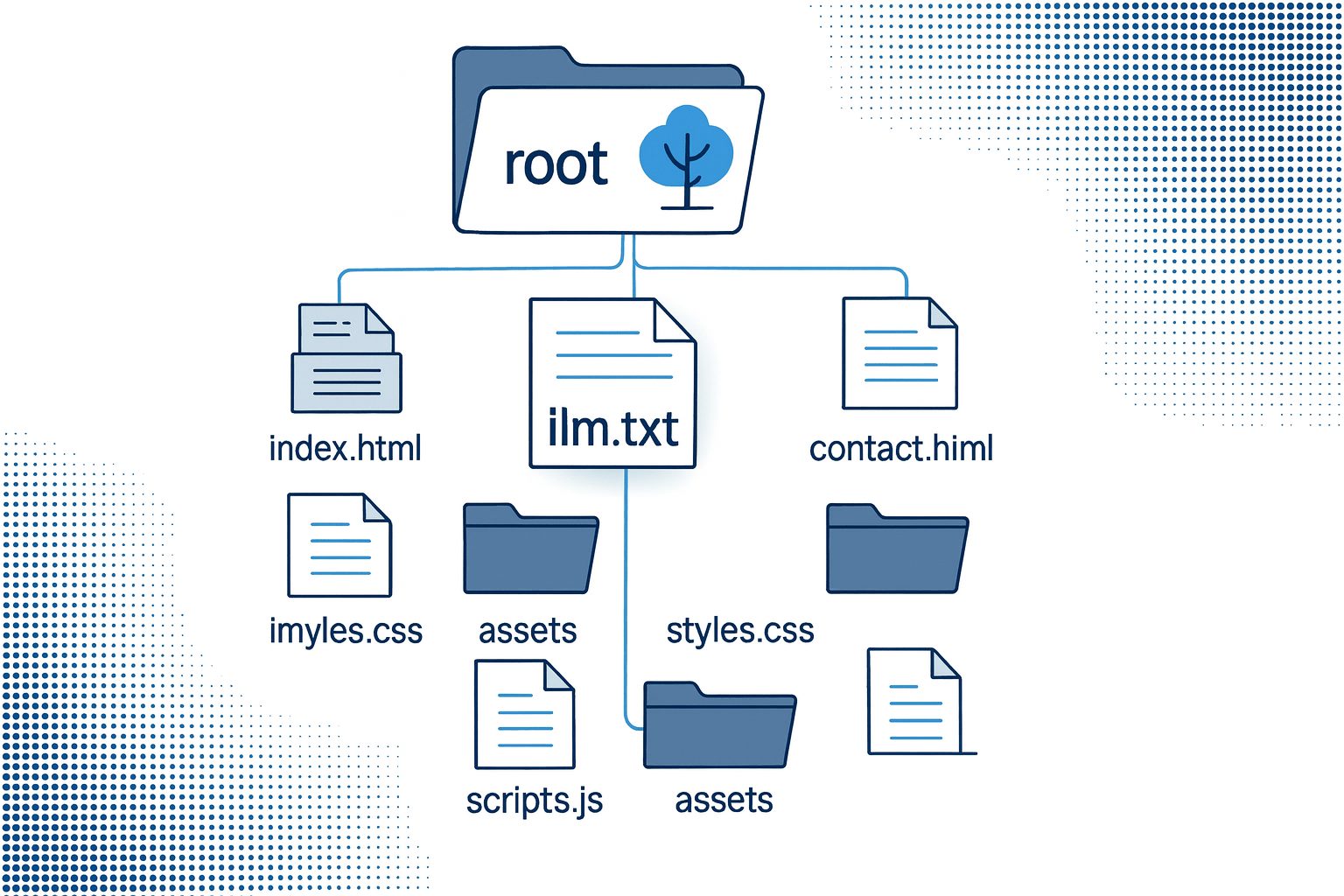
Introduction
Artificial intelligence is no longer a futuristic concept. It’s here, reshaping how people search for information, interact with websites, and make buying decisions. Large Language Models or LLMs such as ChatGPT, Google Gemini, Claude, and others are trained on enormous collections of text from across the internet. Therefore, if your website is part of the open web, there’s a good chance AI systems have already scanned your pages, and will again.
Over the past several months, we’ve seen notable drops in organic and overall website traffic for many brands. AI-powered overviews in Google Search and the growing use of platforms like ChatGPT mean users are often getting answers without ever clicking through to a website. At the same time, AI referral traffic is steadily increasing, creating a new and valuable traffic source for sites that are credited and linked as original sources.
This is where LLM.txt comes in. LLM.txt is a simple, low-cost tool that can help you take advantage of this shift. By placing a small text file in your website’s root directory, you can set clear rules for AI crawlers. Like the familiar robots.txt file for traditional search engines, it’s designed for large language models and AI data collection. Not only will it help the LLMs retrieve the necessary information faster [read: TLDR], but it will also give them direction on how your content is accessed, attributed, and linked. In a fast-changing digital landscape, this small step can make a measurable difference in preserving and growing your visibility.

What Is LLM.txt?
LLM.txt is a plain text file that sits in the root directory of your website, at an address like https://yourwebsite.com/llm.txt. Inside this file, you can write instructions for AI crawlers that explain what parts of your site they can access, what they cannot access, and under what conditions they may use your content.
An LLM.txt file can include rules like:
- Which URLs or sections of your site they may access for training
- Which parts of your site are off limits to AI crawlers
- Requirements for attribution if your content is used
- Any additional terms or notices for AI developers
While LLM.txt is not legally binding, it creates a clear, accessible policy for AI developers who wish to respect content owner preferences; and it leaves a digital paper trail that can support your position if disputes arise.

Why Does LLM.txt Matter?
- Protecting Your Brand Identity & Having Control Over Your Content
Search engines reward sites that publish original, high-quality content. If AI models scrape and rephrase your work without credit, you risk losing both ranking power and brand distinctiveness. Without proper attribution, AI-generated outputs can blur your tone, style, and messaging, weakening the visibility your brand has worked hard to build.
By setting clear usage rules in LLM.txt, including attribution requirements, you help ensure that if your content appears in AI-generated responses, it remains tied back to your site. This reinforces both your brand identity and your authority in the search ecosystem. - Driving Referral Traffic and Backlinks
When AI tools follow your LLM.txt attribution rules, they can link directly to your site as the original source. These links count as external backlinks, which are valuable for both search performance and audience growth.- Direct AI Backlinks: Links from AI platforms themselves act as external backlinks, strengthening your site’s authority signals for SEO since quality backlinks remain a core ranking factor. They can also send direct referral traffic from AI-driven platforms.
- Secondary Backlinks from Exposure: When AI cites your site, human readers such as journalists, bloggers, or industry peers may discover your content and link to it in their own work, creating additional backlink opportunities that further boost your authority.
- Staying Ahead of Algorithm Changes
Google and other search engines are integrating AI into their results, such as Google’s Search Generative Experience. Implementing LLM.txt now positions your site as AI-aware and adaptable. This proactive move can help you respond faster to changes in attribution handling, snippet inclusion, and content credit.

How to Create and Implement LLM.txt
- Create a plain text file named llm.txt.
- Write your access rules. You can use natural language or a structured format similar to robots.txt.
- User-agent: GPTBot
- Disallow: /private/
- Allow: /articles/
- Attribution: Required
- Upload to your site’s root directory so it’s publicly accessible (e.g., https://yoursite.com/llm.txt).
- Test your file by visiting it in your browser to confirm it loads correctly.
- Optionally, announce your LLM.txt policy in your privacy policy or terms of service so human readers also understand your stance.

Best Practices for an Effective LLM.txt
- Keep the file concise but clear. The easier it is to read, the more likely it will be respected.
- Update regularly as your content strategy evolves. AI crawlers may revisit your site periodically.
- Include both allowances and restrictions to avoid confusion.
- Use it alongside SEO best practices like canonical tags, structured data, and controlled indexing.
SEO Considerations for LLM.txt
- Ensure attribution links go to indexable, crawlable pages so they pass SEO value.
- Prioritize linking to pages that are optimized for the keywords and topics you want to rank for.
- Monitor referral traffic and backlinks from AI tools to measure their impact on rankings.

The Bigger Picture
The internet is entering a phase where AI does more than index websites. It actively synthesizes, rephrases, and presents information in ways that can bypass traditional clicks. This shift is already influencing how audiences discover brands and how search engines measure value.
In the past year, many sites have already seen declines in organic traffic as AI-generated overviews in search results replace website visits. At the same time, AI referral traffic is growing, creating a new opportunity for websites that are credited and linked as original sources. The question is no longer whether AI will affect your traffic but how you will adapt to stay competitive in search.
LLM.txt is not a complete barrier against unauthorized use of your content, but it is a practical and cost-effective way to guide AI crawlers toward proper attribution. It can generate backlinks, increase referral traffic, and help preserve the SEO equity you have worked hard to build.
By implementing LLM.txt now, you prepare your site for future regulations, take an active role in shaping how AI platforms handle your content, and maintain a stronger position in an evolving search landscape. Small steps taken today can have a lasting impact on your long-term visibility and growth.
